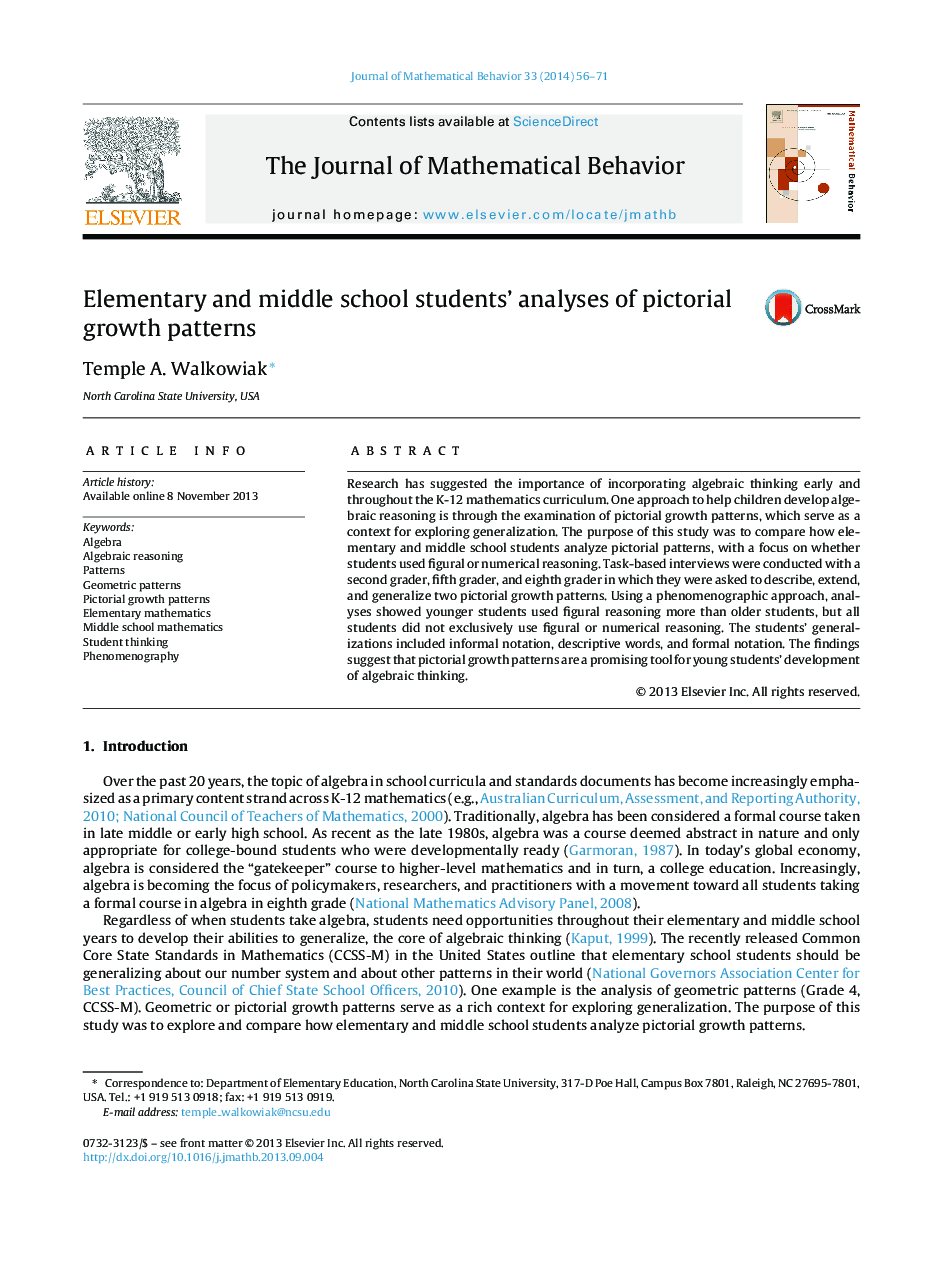| کد مقاله | کد نشریه | سال انتشار | مقاله انگلیسی | نسخه تمام متن |
|---|---|---|---|---|
| 360685 | 1436018 | 2014 | 16 صفحه PDF | دانلود رایگان |
• Three young students were asked to describe, extend, and generalize about growth patterns.
• Students did not use figural or numerical reasoning exclusively.
• Younger students were more apt to rely on figural reasoning.
• Students used a variety of ways to communicate their generalizations.
• Pictorial growth patterns appear to be a promising tool for developing algebraic thinking.
Research has suggested the importance of incorporating algebraic thinking early and throughout the K-12 mathematics curriculum. One approach to help children develop algebraic reasoning is through the examination of pictorial growth patterns, which serve as a context for exploring generalization. The purpose of this study was to compare how elementary and middle school students analyze pictorial patterns, with a focus on whether students used figural or numerical reasoning. Task-based interviews were conducted with a second grader, fifth grader, and eighth grader in which they were asked to describe, extend, and generalize two pictorial growth patterns. Using a phenomenographic approach, analyses showed younger students used figural reasoning more than older students, but all students did not exclusively use figural or numerical reasoning. The students’ generalizations included informal notation, descriptive words, and formal notation. The findings suggest that pictorial growth patterns are a promising tool for young students’ development of algebraic thinking.
Journal: The Journal of Mathematical Behavior - Volume 33, March 2014, Pages 56–71
